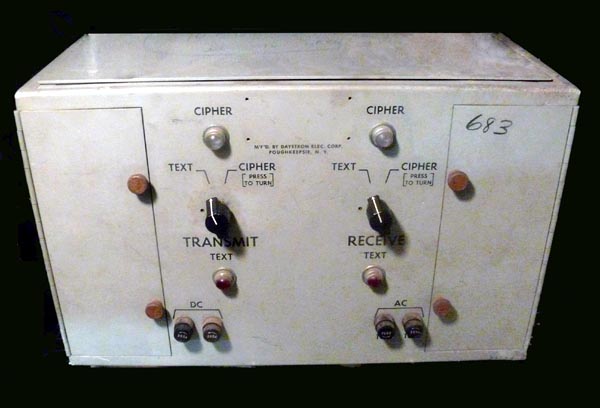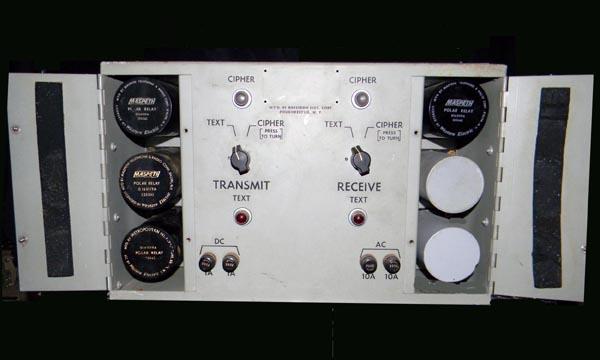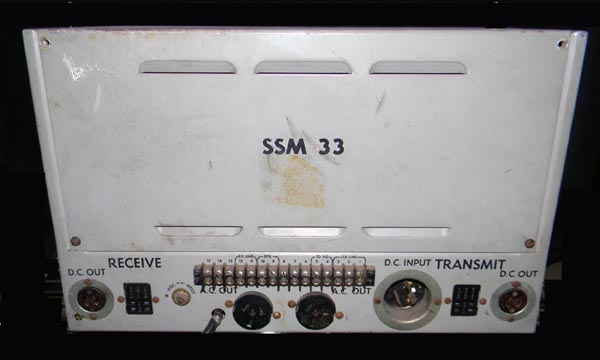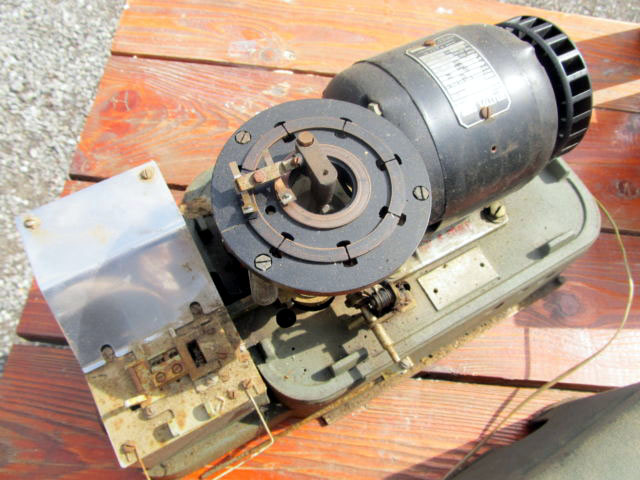 |
| Some parts of an SSM-33 cryptosystem
with a spare synchronous TD motor. At the top is the 14 KTR teleprinter
(Keyboard Typing Reperforator). This unit normally would be used to prepare
a clear text copy of traffic to be transmitted into the SSM-33 for encryption
and transmission. The clear text would be printed on the tape as the holes
were being punched, so the operator could check the data stream.
Almost all traffic was punched up on tape so an operator could check it and also circuit time was at a premium. Once the operator established the circuit, clear text tapes would be fed into the SSM-33 and encrypted. Rather the special TD, a normal TD is depicted in the photo. A normal TD has two cables and it also has a tight-tape stop lever coming out of it’s left side which a special TD does not have. |
 |
| SSM-33 cipher interface and mixer unit front view with line relay doors closed. |
 |
| Front view with doors open to show the polar line relays. |
 |
| Rear view with cover on. |
 |
| Rear view with cover off. |
| All photos in this table by Don Robert House. |





